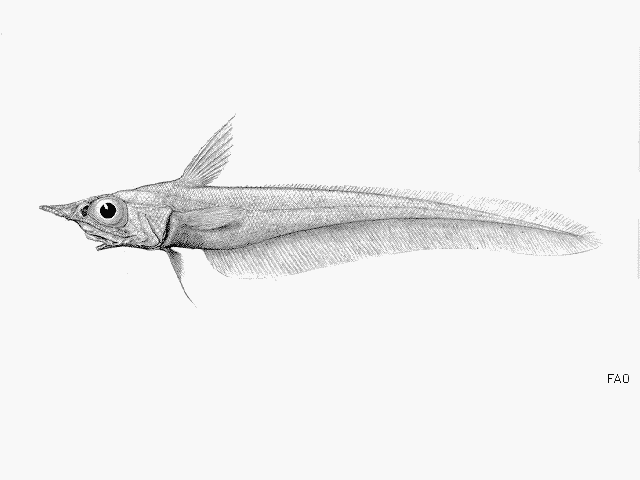| Macrouridae (Grenadiers or rattails) |
| 22.5 cm TL (male/unsexed) |
|
bathypelagic; marine; depth range 400 - 1300 m, non-migratory |
| Indo-Pacific, tropical waters: from the Indian Ocean to Sala y Gomez; north to Hawaii; south to New Caledonia. |
|
Dorsal spines (total): 2-2; Anal spines: 0-0. Snout long, sharply pointed, with a prominent, bifid, terminal scute; underside of the head almost entirely naked. Body scales with short, conical, posteriorly directed, spinules arranged in 4 to 6 parallel rows. Periproct moderate-sized, pear-shaped to oval, midway between the pelvic and anal fins; usually with a small black fossa anterior to anus. |
| Found on the continental slope (Ref. 75154). Benthopelagic (Ref. 58302). |
|
Not Evaluated (N.E.) Ref. (130435)
|
| harmless |
|
Type locality of Mataeocephalus nigrescens, between Leyte and Mindanao in 1,345 m; also known between Marinduque and Luzon in 970 m, Jolo, Sulu Sea in 622-929.6 m, and Palawan Passage in 686 m (Ref. 280). Collected during the Hearst Expedition 2011 done off Batangas and Mindoro, off SW Luzon, otter trawl in 636-664 m and beam trawl in 633-642 m (Ref. 95664). |
Source and more info: www.fishbase.org. For personal, classroom, and other internal use only. Not for publication.

